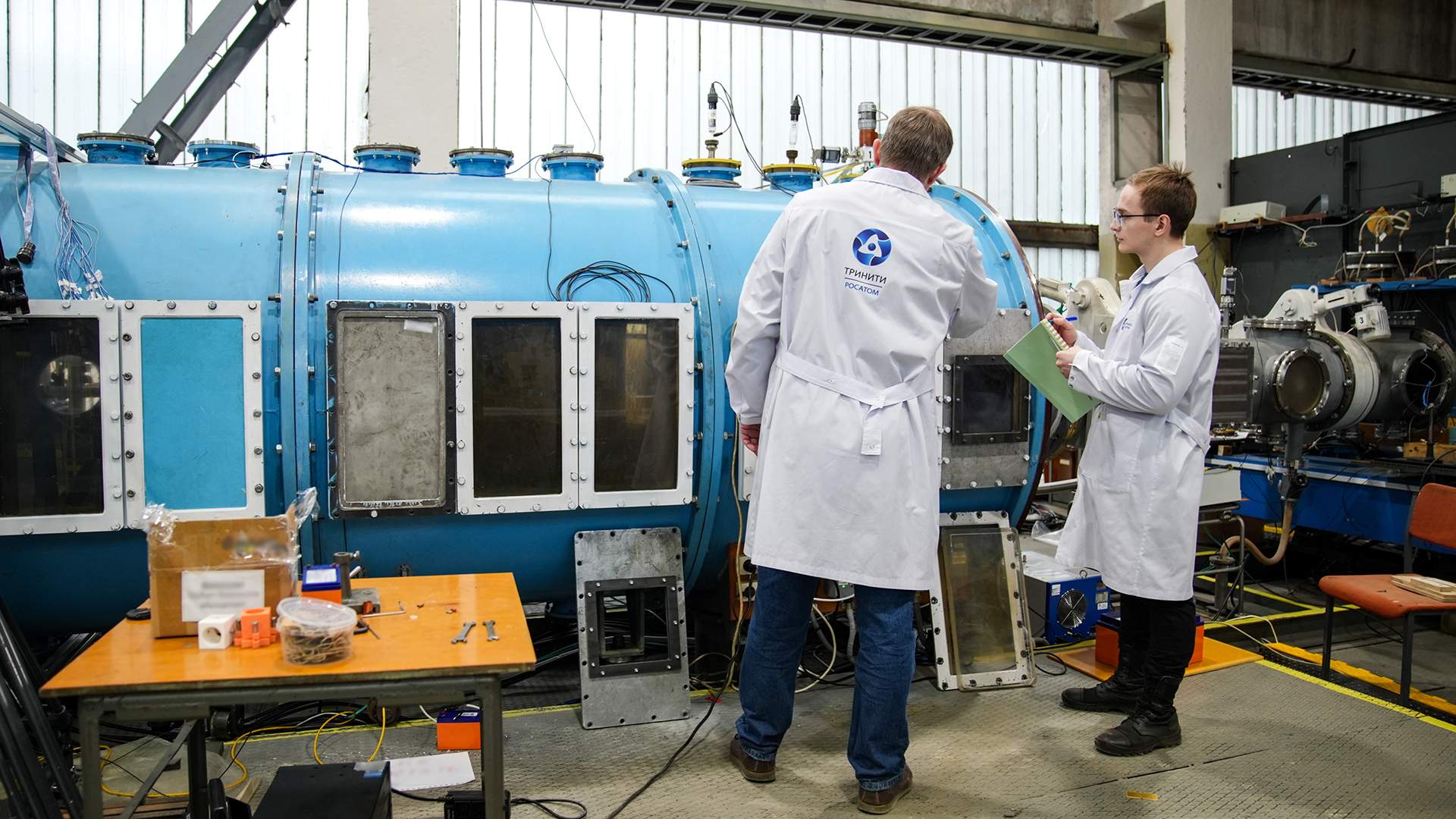- Статьи
- Science and technology
- Plasma heart: Russian engine will deliver to Mars in one or two months
Plasma heart: Russian engine will deliver to Mars in one or two months

Russian scientists and designers have developed a rocket engine based on a magnetoplasma gas pedal and created a laboratory prototype of the unit. The engine will run on hydrogen. It will be able to accelerate particles - charged electrons and protons - to a speed of 100 km/s. Ships equipped with such propulsion systems will be able to reach the far corners of the solar system and go beyond it in a reasonable time, and flights to Mars will take one or two months.
How the plasma engine is organized
Scientists from Rosatom's Troitsk Institute have developed a rocket engine based on a magnetoplasma gas pedal and created a laboratory prototype of the unit. According to the researchers, the propulsion system will be able to accelerate particles (charged electrons and protons) to a speed of 100 km/s. This will allow spacecraft to make interplanetary flights and even go beyond the solar system.
- In traditional power units, the maximum velocity of matter flow is about 4.5 km/s, which is due to the conditions of fuel combustion. In contrast, in our engine, the working body is charged particles that are accelerated by an electromagnetic field. This makes it possible to achieve much higher speeds," Alexei Voronov, first deputy general director for science at the Troitsk Institute, told Izvestia.
He added that thanks to the new propulsion systems, the time of spacecraft flight to Mars will be reduced to one or two months (depending on the size of the ship and cargo). This will make interplanetary travel safer, as it will reduce the expedition time and the period of stay of the crew under the influence of cosmic radiation.
- A prototype engine has now been prepared. It is intended for ground testing and development of various engine operating modes. According to the plan, the flight model of the unit will appear in 2030. The engine operates in pulse-periodic mode. Its power is about 300 kW. Earlier, the engine resource of more than 2400 h was justified, which is enough for a transportation operation to Mars. The main goal of the project is to demonstrate the operation of the prototype in pulse-periodic mode," explained Konstantin Gutorov, the project's scientific adviser.
He reported that a special experimental stand is currently mounted for the tests . It is a chamber with a diameter of 4 meters and a length of 14 meters, in which conditions similar to those in space are reproduced. It is equipped with innovative highly sensitive sensors, vacuum pumping and heat removal systems.
According to the scientist, the vehicles will be launched into orbit in the traditional way - using launch vehicles equipped with chemical engines. In turn, plasma units will be included after entering the reference orbit. They can also function as part of a space tug - a ship that is designed to carry cargo between the orbits of the planets of the solar system.
- A plasma rocket motor is a type of electric motor. It is based on two electrodes. Charged particles are passed between them, and at the same time a high voltage is applied to the electrodes. As a result, the current creates a magnetic field that pushes the particles out of the engine. Thus, the plasma receives directional motion and creates thrust," said Egor Biriulin, a junior researcher at Rosatom's scientific institute in Troitsk.
Why hydrogen is used
To create motion in the engine, electric energy and hydrogen as a working body are used, explained Egor Biriulin. The source of energy will be the onboard nuclear reactor. The advantage of hydrogen is that its atoms are light and have a high lapse rate. This makes it possible to reach significant speeds without large consumption of working substance. In addition, hydrogen is the most abundant element in the universe. Therefore, it is possible to replenish its reserves without much difficulty in the future.
- Another positive feature of the new installation - in the proposed mechanism, the plasma does not need to be strongly heated. As a result, parts and components of the engine do not experience temperature overloads, and the electrical energy used for its operation is almost completely converted into motion. This makes the installation more efficient compared to its analogs," the specialist added.
He specified that the engine thrust (the force it generates) according to calculations will be about 6 N. This is the maximum value among the projects under development. With such characteristics, the interplanetary ship will need a reserve of time for acceleration and braking. In fact, the entire flight may consist of a phase of smooth acceleration and subsequent deceleration.
- In the development of plasma engines, our country is decades ahead of the competition. For example, such Russian-made devices are used in the One Web grouping. They serve as thrusters for orbiting, maneuvering and deorbiting satellites. Another example is the Psyche research module, which was sent by NASA in 2023 to study the asteroid Psyche. This vehicle is also equipped with Russian plasma engines," Nathan Eismont, a leading researcher at the Space Research Institute of the Russian Academy of Sciences, commented to Izvestia.
The presented development, the expert emphasized, is ahead of the curve. As a rule, the jet speed of existing plasma engines is at the level of 10 km / s, some provide 30-50 km / s. Speeds of about 100 km/s coupled with the use of hydrogen as a working body will bring the global space industry to a qualitatively new level, he summarized.
Переведено сервисом «Яндекс Переводчик»




